- Home
- P. T. Deutermann
The Commodore Page 3
The Commodore Read online
Page 3
“Speed two seven, broad weave aye, sir,” the OOD replied, and then gave the orders to the lee helmsman. Sluff could almost feel her jump when the snipes opened the main steam throttles and poured on the oil. Normally he’d make a transit at a more economical speed, but if they were going for fuel, why not get over there in a hurry? Twenty-seven knots and the broad weave also made it harder for any lurking Jap subs to set up a good solution.
“Atlanta’s gone,” Sluff said to the exec, who was standing next to his captain’s chair.
“I heard,” Bob said. “Gotta wonder what were they thinking, putting light AA cruisers in the line against Jap battleships.”
“Yeah,” Sluff said, quietly. “You see the signal from Helena?”
“Yes, sir,” the exec said. “A battleship formation. That means that what happened last night isn’t over.”
“Precisely,” Sluff said. “The Japs are trying to get a bombardment group down here to smash the Marines’ airfield once and for all. As long as the Cactus air force is intact, they can’t resupply their army guys on the ’Canal.”
At that moment, they both heard the sound of very large shells coming in, making a heavy, sheet-ripping, wa-wa-wa sound as they rotated out of the sky and smashed into the sea around them, raising bright green waterspouts a hundred feet into the air.
“Right full rudder,” Sluff shouted, jumping out of his chair. “Captain has the conn.”
The ship heeled to port as she cut her way around from an east-northeast heading toward Florida Island to due south. “What the hell was that?!” Bob said, hanging on to the bridge counter as the ship’s heel increased.
“Steady one eight zero, then broad weave again,” Sluff ordered. He turned to the exec. “That’s that wounded Jap battlewagon.”
“Ain’t wounded nowhere enough,” the bosun’s mate of the watch observed, as another four-gun salvo came howling in from the northwest, raising four thundering waterspouts in their wake.
Amen to that, Sluff thought, as he silently urged his ship to open the range, and now would be nice. Battleships could shoot three-thousand-pound shells from sixteen to twenty miles, and he had no idea how far away that Jap was. He ordered another sharp course change to the east, keyed the bitch-box, and asked Combat for a range to the battleship.
“He’s not showing on radar, Cap’n. He’s probably up there north of Savo Island, in the island’s radar shadow.”
“How far is that?” Sluff asked.
“Twenty-eight thousand yards, Cap’n.” Fourteen miles, Sluff thought. Still too close.
Then the incoming ceased. The signal bridge gang, using their big-eyes telescopes, had finally spotted the battleship. “There’s a crowd of dive-bombers over Savo,” the chief reported. “Looks like they’re goin’ after that sumbitch.”
Sluff felt a wave of relief. None too soon, he thought. One fourteen-inch-shell hit could break J. B. King into little-bitty pieces.
He ordered the officer of the deck to take the conn and resume the course for Tulagi. The exec went to the chart table to confirm the proper heading. Sluff sensed the crewmen on the bridge exhaling after seeing those monstrous shell splashes rising up like watery giants all around them. Talons of doom, reaching for them, by name. Some of the younger sailors were joking about getting away from a Jap battleship.
Wait until tonight, Sluff thought. This grudge match isn’t over. Somewhere out there was another Jap battleship, with friends.
THREE
Fifty miles southwest of Cape Esperance
The signal bridge called down at 1630 that they had the Washington’s director tower in sight on the big-eyes. The rest of her thirty-six thousand tons was still hull-down on the horizon.
“Send CTF Sixty-Four a ‘reporting for duty’ signal,” Sluff ordered. “Once you establish comms, tell him we’re at ninety-five percent fuel and ammo.”
Combat called up and reported they held the two American battleships on radar twenty-five miles out, headed north at twenty knots. There were three smaller pips out ahead of the big ships. Sluff scanned the horizon for a sight of the big boys, but as yet couldn’t see them. Even the horizon itself was hard to distinguish through all the humidity in the air. And that’s why we paint our ships haze gray, he thought.
J. B. King was making twenty-seven knots on an intercept course that should put her in front of the battleship column. The seas were smooth, the air was oppressive, and the sun, lower in the west, looked like a menacing bronze disk. Combat had sent the day’s recognition codes up to the bridge and signal bridge, just in case the big boys thought they might be a Jap tin can approaching and challenged them via flashing light.
Fueling had been a nonevent until a fleet tug brought the Portland into the harbor. The heavy cruiser was down by the stern, where a Long Lance torpedo had smashed her rudder and broken two of her four propeller shafts. Because Florida Island was actually the top of a steep submerged mountain, the water in the harbor dropped off precipitously. That enabled the Seabees to pull the damaged ship right up to the bank and then drape her in camouflage netting from stem to stern to hide her from air attack.
King went alongside a fuel barge and topped off in thirty minutes. The next problem was to get across the northern coast of Guadalcanal to make the rendezvous without attracting more attention from that Jap battlewagon. They set condition II, which allowed half the crew to get some rest while the other half stayed on watch. In the event, the Cactus air forces, assisted by some Helldivers from the carrier Enterprise, had smashed the big ship into a grudging silence. She was still afloat, but wrecked to the point where someone in the Jap high command had to be talking about scuttling her. Even so, J. B. King had hugged the coast of Guadalcanal, not wanting to tempt fate. By the time they passed the vicinity of Henderson Field and Lunga Point, the crippled cruisers were no longer in evidence, except for a massive oil slick where the remains of Atlanta lay bleeding three hundred feet down off Lunga Point. Once they got around Cape Esperance, they headed southwest to find the approaching battleship group.
“Time to intercept a station four thousand yards ahead of Washington is ninety minutes,” the OOD reported. “Her three escorts are each stationed at one-thousand-yard intervals ahead of the main body.”
“Very well,” Sluff said. He leaned forward in his chair and buzzed the wardroom pantry. Mose picked up. Sluff asked for a tray on the bridge whenever Mose could manage it.
When a destroyer approached a formation of capital ships, her captain did not leave the bridge. He wondered when they’d have to go back to GQ. Probably after dark. He sat back and relaxed, determined to enjoy his new ship’s ride as they plowed through calm waters toward the setting sun, as the pestilential, dark green mountains of Guadalcanal receded into the evening mist. There was a swell under that deceptively flat sea, and the ship was gracefully rising and falling in time to huge, deep, and invisible waves that had probably originated on the other side of Borneo.
Twenty-one hundred tons light, twenty-five hundred tons fully loaded, 376 feet long, and capable of thirty-five knots, J. B. King sported five single five-inch gun mounts, two torpedo mounts carrying five fish apiece, a bristling nest of smaller AA weapons, depth charges, and, most importantly, a Combat Information Center supported by a full radar suite. There were 329 officers and men assigned to run and fight her, and he was still so proud of her that he smiled every time he even thought about being the skipper.
A sudden breeze washed through the pilothouse, rattling the charts on the chart table and blowing a bluish cloud of cigarette smoke, coffee fumes, and human perspiration out to the leeward bridge wing, to be replaced by the smells of the evening meal coming up from the ship’s galley. He became aware of the periodic thrumming vibration as her twin screws lifted and settled back into that deep swell.
“Bridge, Sigs,” the bitch-box squawked.
He held down the talk key. “Bridge, aye.”
“Captain, message from CTF Sixty-Four in Washington: Take s
tation one thousand yards astern South Dakota. Night action expected.”
He acknowledged the message and pressed the key for the Combat Information Center, two decks below. “Combat, put us on an intercept course at twenty-five knots to take station one thousand yards astern of South Dakota, second capital ship in line.”
“Course is two three five, Cap’n,” Carl Nelson, the navigation officer, replied.
Sluff smiled. Nelson had already gotten the word from the signal bridge and computed the correct intercept course before even being asked. What was that famous saying? The difference between a good officer and an outstanding officer was about three minutes? He told the OOD to change course to 235 and take station as ordered. Mose came out into the pilothouse, bearing a tray covered by a white napkin. The ship heeled to starboard as she came around to the southwest to intercept her station, a point in the water behind South Dakota, which was moving north at twenty knots in the wake of the Washington.
He lifted the napkin: it looked like meat loaf, mashed potatoes, and green beans. The meat loaf was real; the potatoes had been reconstituted from a white powder, and the beans canned. He picked up a fork and dutifully ate all of it without tasting much of anything. He finished with a fresh cup of coffee from the chart-table pot. The sun was now a reddish disk on the western horizon, and he could just make out the black silhouettes of two battleships rising from a shimmering horizon. The three destroyers ahead of the main body were still not visible. He called the signal bridge and asked who the escorts up front were. The chief told him they were the Calhoun, the Walke, and the Morgan. Sluff asked the chief if there was a division commander embarked. Negative.
A real pickup team, he thought, based probably on which tin cans had the most fuel. If Halsey had sent his only two available battleships to Guadalcanal, things must really be getting desperate. The tattered remains of the cruiser force he’d seen this morning reinforced that notion. Wow.
Mose came back out for the tray and asked if the captain wanted dessert. Sluff shook his head. The more he thought about what might be coming tonight, the less he was interested in food. He would have liked to gather his department heads together in the wardroom and brief them on what to expect later tonight. The problem was that he didn’t know. In all probability, the admiral over in the Washington probably didn’t know either. Clearly, the two admirals in the cruiser force last night had been in the same predicament, and now they were both dead.
He glanced sideways at the bridge team—the officer of the deck, the junior officer of the deck, the helmsman, the lee helmsman, the bosun, the quartermaster, the messenger of the watch, the lookouts on either bridge wing. He wondered what they were thinking now as the ship closed in on that dark line of ships whose silhouettes were becoming more and more distinct as they approached. At some point he was going to have to get on the ship’s announcing system, the 1MC, and tell them what was going on.
“Approaching station,” the officer of the deck announced. The battleships were clearly visible now in the orange light of sunset, beautiful and deadly, their huge sixteen-inch guns carried low and flat along their seven-hundred-foot length, their towering fire-control structures reaching over 150 feet into the air. He’d had the stations wrong, it turned out. South Dakota was in the lead and Washington second in the line, and this presented a problem: Their orders had been to take station astern of South Dakota, but that would have put them alongside Washington. The officer of the deck had just seen the problem and turned to Sluff.
“Take station astern of Washington, Mister Heimbach,” Sluff said. “Somebody screwed it up. And tell Combat the order is reversed.”
“Aye, aye, sir,” the OOD replied. He took a bearing on Washington’s stern, now only three miles distant, and adjusted King’s course to intercept a station one thousand yards astern and right in the battlewagon’s boiling white wake.
The exec materialized next to Sluff’s chair. “Anything on the Fox sked about tonight’s operation?” Sluff asked, as he watched LTJG Heimbach conn J. B. King smoothly into Washington’s broad wake.
Now there was a whiff of stack gas on the breeze from ahead, courtesy of the battleship’s eight boilers directly ahead of them. The bosun closed the pilothouse’s windward door.
“Not a word,” Bob said. “I keep hoping for a visual signal, but nobody’s talking. We got a radio check from CTF Sixty-Four on the TBS, but that’s it. They know we’re here.”
The bitch-box light came on. “Bridge, Sigs, signal in the air: Corpen zero four fie-yiv tack speed two-zero.”
The OOD looked over at Sluff, who nodded that he understood the maneuver being ordered. A phone-talker reported that Combat recommended following in Washington’s wake and slowing to twenty knots when the signal was executed.
The OOD told the signal bridge “signal understood.” Thirty seconds later the signalmen reported that the signal had been executed. Four thousand yards ahead they could see the lead destroyer turning to the new course of 045, or due northeast.
“Heading toward Savo Island,” the exec said.
“And over the bones of how many ships?” Sluff muttered. He glanced to his right to look at the looming bulk of Guadalcanal, some thirty miles distant. Like most naval officers, he had never even heard the name Guadalcanal until last August, when news of the invasion had spread through the American fleet. There was an entire Marine division there now, clinging to one Japanese-built dirt airfield while the Japanese Imperial Army fought to take it back.
Fifteen minutes later, after the column was steady on the new course and speed, the red light on the bitch-box lit up.
“Bridge, Sigs, signal in the air from CTF Sixty-Four. Take station in the van.”
“That’s it?” Sluff asked.
“Yes, sir.”
“Okay, Sigs, roger for it. Officer of the deck, haul out to starboard at thirty knots and take station one thousand yards ahead of Walke.”
The OOD gave the necessary orders and J. B. King lunged ahead as she turned out of the Washington’s wake and started up the line, passing Washington, then South Dakota, and then overhauling the three destroyers in the lead of the formation. The Combat Information Center made course and speed recommendations to land the ship three thousand yards ahead of South Dakota, taking over the lead position in the formation.
“God, I wish I knew what the hell was going on,” Sluff said to the exec, who’d come out to the bridge wing with him. The glistening hulls of the huge battlewagons were barely visible now that the sun had gone down. None of the ships were showing navigation lights, so from here on out Sluff knew it was going to be a radar game. The two battleships looked like castles of steel as they plowed through the darkening waters of Ironbottom Sound.
“You better get below,” Sluff said. “Make sure everyone’s had chow and then we’ll have to set GQ pretty soon. I don’t think there is a plan, other than going up around the top of Savo Island and seeing who shows up.”
“The Japs show up, they’re gonna get the surprise of their lives,” Bob said.
Sluff looked over at his exec in the gloom. “So far, it’s been the Japs who’ve done all the surprising. They’re pretty damned good at this night stuff. Most of the iron on the bottom of Ironbottom Sound is ours.”
“It’s their torpedoes,” Bob said. “We see a Jap destroyer or cruiser, we have to assume their torpedoes are already on their way.”
“Damned right, so once we determine that they’ve seen us, we maneuver. Change course. Change speed. Do something—anything—to disrupt their torpedo firing solution.”
“But we’re in formation,” Bob protested. “We can’t maneuver out of the line without orders.”
Sluff shook his head. “They haven’t even had the courtesy to tell us what they think is going to happen tonight,” he said. “We get into it, XO, I’m going to do what it takes to keep us alive and then to go after the bastards. You can bet your ass the battleship guys are not going to be thinking about their destroyers o
nce the shit starts.”
“Yes, sir,” Bob said, his voice neutral.
“You disagree?”
“No, sir. I like the hell out of that ‘keeping us alive’ plan.”
Sluff laughed as the exec left the bridge and headed for the CIC. The OOD reported that the ship was on station at the head of the line plowing through the black waters of Ironbottom Sound. His exec was absolutely correct, though. A warship in formation was supposed to stay in formation until ordered otherwise. In Sluff’s opinion, however, that’s why there were so many American ships lying beneath them in Ironbottom Sound. This rigid adherence to formation doctrine gave the enemy an immense advantage: Once they could see an American formation, they knew that their fire-control solution wasn’t going to change much, which was perfect for a torpedo attack.
Four destroyers, two battleships, looking for trouble. He stared into the blackness ahead. The night air seemed to be oppressively hot and humid, even with the sun down. The twenty-knot breeze coming over the bow gave scant comfort. He looked at his watch. Twenty thirty. Most of the night actions around Guadalcanal had erupted around midnight. The Japs timed their arrival at their objective area so that they could do what they’d come to do and then be out of range of the Cactus air forces by daylight. But what if they came early? As if to accentuate that question, lightning erupted way over on the northwestern horizon, too far away to be heard but bright enough to paint the huge steel towers of the battleships looming behind them in a brief, yellow glaze. That’s what battleship guns probably looked like at night when they started shooting at you from over the horizon.
Change of plan.
“Officer of the deck,” Sluff called into the pilothouse. “Pass the word: GQ will go down in five minutes.”
He went to his sea cabin as the shrill notes of the bosun’s call pierced the 1MC speakers on the weather decks and every space within the ship. He’d told the XO to plan on GQ in twenty minutes or so, but those distant flashes bothered him. The captain’s sea cabin was more like a steel box right behind the bridge than a real cabin. It measured six feet by eight and contained a fold-down bunk, a sink, and a steel commode. It was designed so that an exhausted captain could lie down for a few minutes while not being more than three steps away from the bridge. His battle-dress gear hung on a bulkhead.

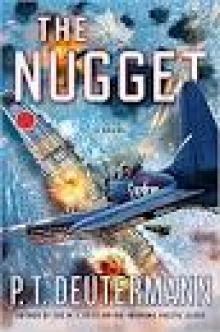 The Nugget
The Nugget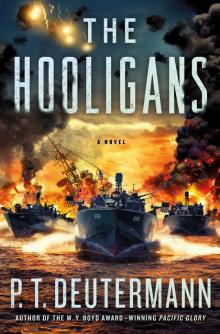 The Hooligans
The Hooligans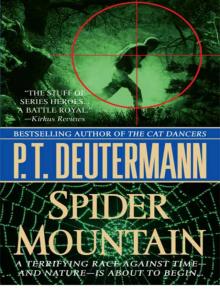 SPIDER MOUNTAIN
SPIDER MOUNTAIN![Cold Frame [retail] Read online](http://i1.bookreadfree.com/i/03/19/cold_frame_retail_preview.jpg) Cold Frame [retail]
Cold Frame [retail] Sweepers
Sweepers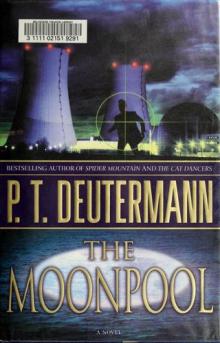 Cam - 03 - The Moonpool
Cam - 03 - The Moonpool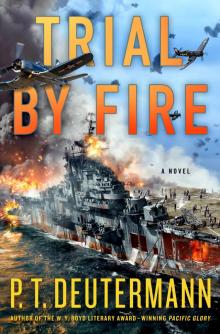 Trial by Fire
Trial by Fire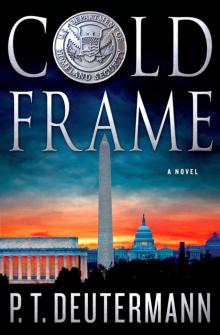 Cold Frame
Cold Frame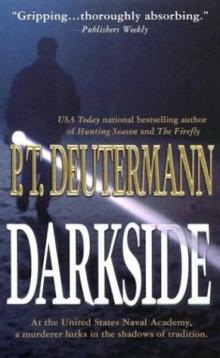 Darkside
Darkside Cam - 04 - Nightwalkers
Cam - 04 - Nightwalkers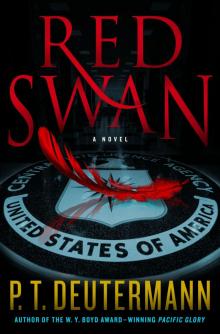 Red Swan
Red Swan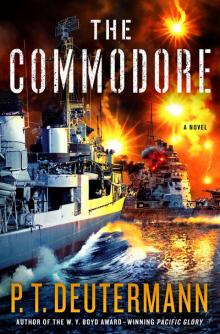 The Commodore
The Commodore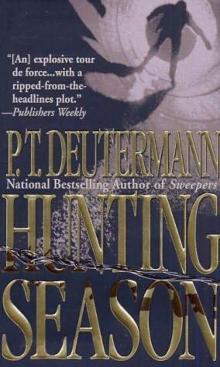 Hunting Season
Hunting Season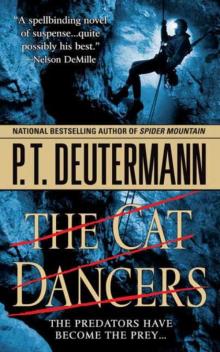 The Cat Dancers
The Cat Dancers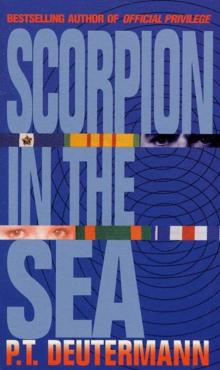 Scorpion in the Sea
Scorpion in the Sea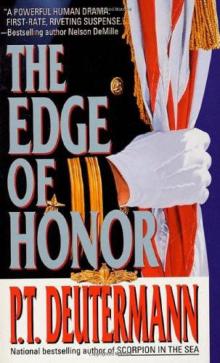 The Edge of Honor
The Edge of Honor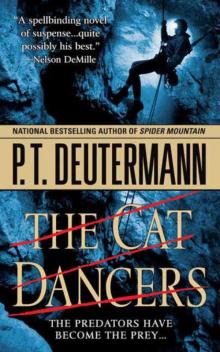 The Cat Dancers cr-1
The Cat Dancers cr-1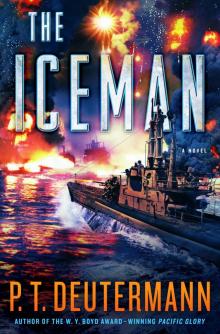 The Iceman
The Iceman The Iceman_A Novel
The Iceman_A Novel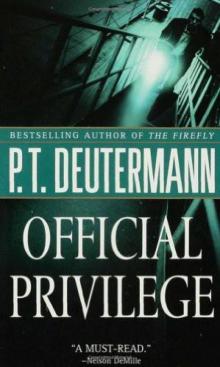 Official Privilege
Official Privilege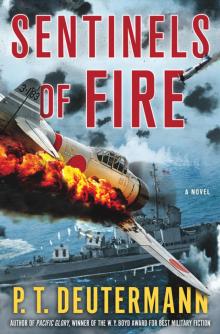 Sentinels of Fire
Sentinels of Fire The Moonpool cr-3
The Moonpool cr-3 Nightwalkers cr-4
Nightwalkers cr-4 The Firefly
The Firefly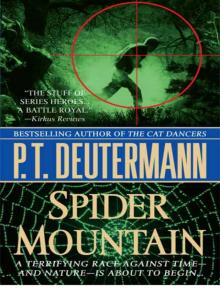 Spider mountain cr-2
Spider mountain cr-2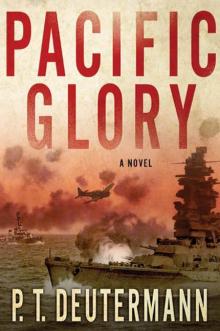 Pacific Glory
Pacific Glory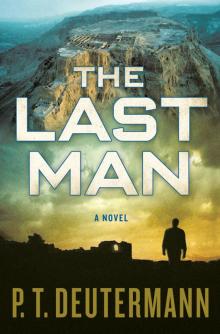 The Last Man
The Last Man